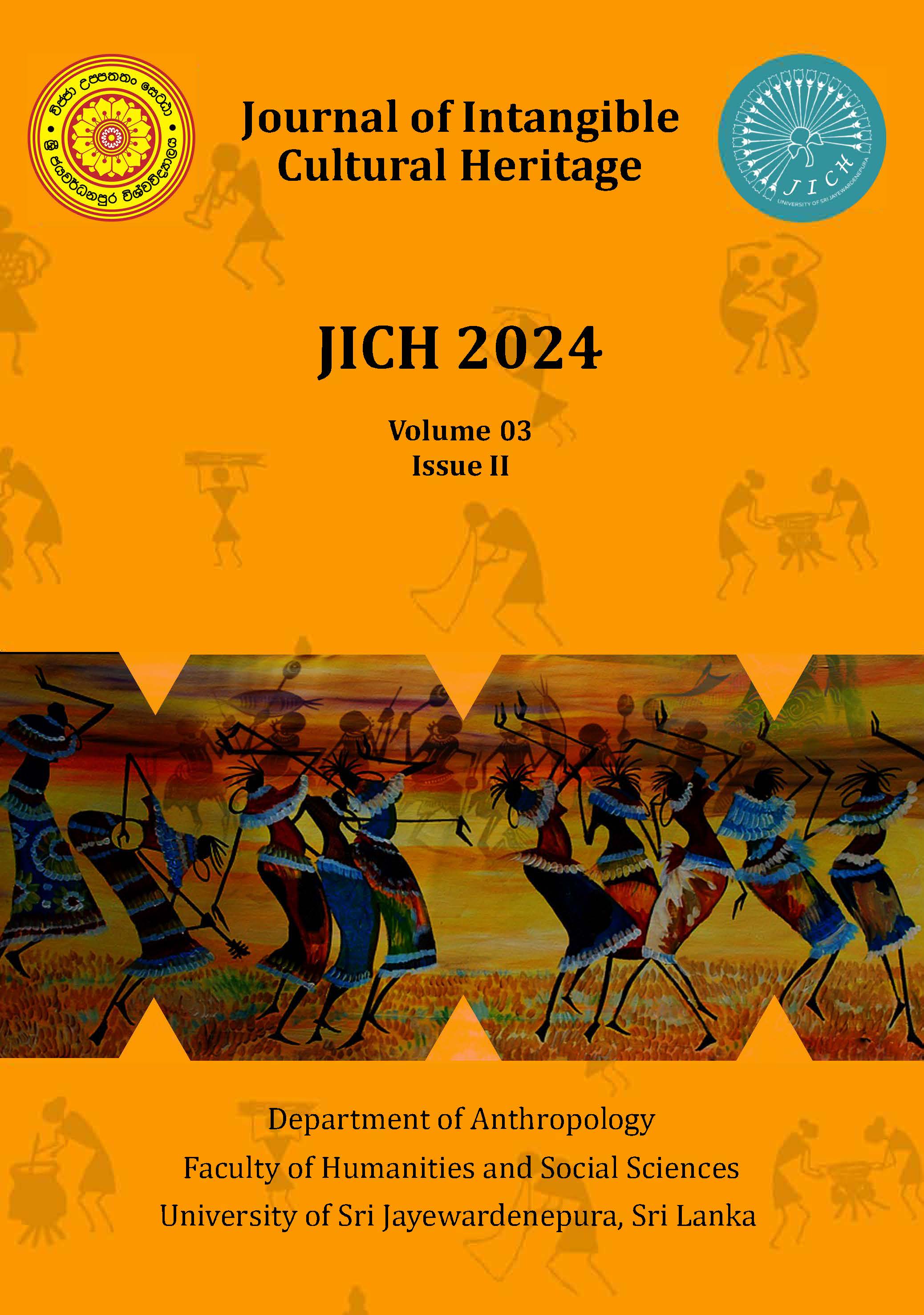A Socio-anthropological Study the Ritualistic Background Associated with the Seenigama Dewalaya
DOI:
https://doi.org/10.31357/jich.v3i02.7931Keywords:
Mundane aspiration, Religious practices, Rituals, Seenigama DewalayaAbstract
Lay people usually associate religious sites with the aspiration of making their mundane and super mundane desires a reality. This research was focused towards the ritualistic functionality of the Seenigama Dewalaya both in terms of white and black rituals. The research was a socio-anthropological research and a qualitative one. The sample of the research comprised of two in-charges of the shrines of sea shrine (Muhundu Dewalaya) and costal shrine (Verala Dewalaya) of Seenigama Dewalaya and 10 devotees who came in search of divine assistance. The sample was purposively selected. Semi-structured interviews, in-depth interviews, and observation techniques were utilized as the data collection tools. Thematic analysis was employed as the data analyzing technique. Research findings are as follows; Devotees engage in making vows and white magic in the coastal shrine whereas curses and black magic are done in the sea shrine. The devotees coming to Seenigama Dewalaya are in three main forms; fishermen, politicians and people from governing bodies and lay public. Fishermen make vows to Seenigama dewalaya to protect themselves from unexpected hazards on the sea and to increase their self – esteem required for multi-day sea tours. Lay people make visits to Seenigama dewalaya with the intention of punishing the people who did them wrong. Political leaders go there with the hope of winning elections and defeating their political rivals. The research concludes that Seenigama Dewalaya predominantly tries to feed the needs of the mundane society and it manifests a cross-section of the Sri Lankan psycho-social realm.


